#ecr land price
Text
Mini Resort Sale in ECR Pattipulam
Mini Resort Sale in ECR Pattipulam PROPERTY ID NO 1766 Mini Resort Sale in ECR Pattipulam Land Area 4800 Sqft Built-up Area 1800 Sqft 5 Rooms Dtcp Approved Fully Airconditioned Swimming Pool Conference Space Maid Room Power Backup Genset Compounded Pooja Room 3-Month-Old building Revenue Model: Booking cost 14K For week Days Booking For 18K-20K For the weekend Income First Month 1.50 Lakhs Second Month 2.75 Lakhs Price 1.70 Crores (Negotiable) Contact 8681073762 WHATSAPP CHAT – https://wa.me/918681073762 https://chennaipropertysale.com/wp-content/uploads/2023/10/1800-Sqft-Mini-Resort-Sale-in-ECR-Pattipulam-6.jpg More Details Photos pls visit this link👇 https://chennaipropertysale.com/mini-resort-sale-in-ecr-pattipulam/ #COMMERCIAL, #ECR, #PATTIPULAM
#1 acre land for sale in ecr chennai#acre sale in ecr#beach plots for sale in ecr chennai#beach property for sale in chennai#beach side land for sale in chennai#beach view land for sale in ecr#buy property in ecr chennai#commercial factory sale in kottivakkam#commercial land for sale in ecr chennai#commercial property for sale in kottivakkam#commercial property sale in kottivakkam#ecr beach plot sale#ecr beach side property#ecr chennai beach land#ecr chennai properties#ecr commercial chennai#ecr land chennai#ecr land for sale in chennai#ecr land price#ecr land value#ecr on road properties#ecr plot for sale#ecr plots chennai#ecr plts near beach#ecr properties sale chennai#farm house for sale in chennai ecr#farm land for sale in ecr chennai#kottivakkam commercial property for sale#land for sale in ecr beach side#land for sale in ecr chennai
0 notes
Text
Premium Plots in Chennai sold by the Top Developer in Chennai
It is vital to buy a plot of land in a strategic location whose value will appreciate overtime. This happens when there is economic development surrounding the area. Ongoing infrastructure development or any future developments in the location will have the value increase.
Chennai has seen a rise in the demand for real estate investments in the last couple of years. This has led to real estate developers supplying land to fulfill the demands.
Among the top real estate developers in Chennai, Elephantine Enterprises is one of them. Their plots are available at reasonable prices. They develop ready to buy plots in locations that have aesthetically pleasing surroundings and strong economic development. Given below are a few of their projects that have been developed in prominent locations.
Must check Out: Commercial Plot for Sale in Chennai

Completed Projects
Noombal Gardenia
Spread across 7.5 acres, Noombal Gardenia is a project that is located between Iyyappanthangal and Vellapanchavadi. These two towns are bubbling with infrastructural developments. This project is located at a place with numerous advantages:
The groundwater table here is high. At 35 ft, residents do not have to worry about running short of water. They have access to abundant water supply.
Land here is known to appreciate in value over the next 5 years.
The project is just 500 metres from Poonamalle High Road.
A few important establishments located near this project are RMZ, ASV Tech Park, DLF IT park, Apollo Specialty Hospital, ACS medical college, Sri Chaitanya School, AGS Cinemas Maduravoyal, GK Cinemas, Grace Supermarket, Iyyappanthangal Bus Stand and Metro, and Chennai-Bengaluru High Road.
Pristine Bay
Pristine Bay is a 42 acre gated community of villas and plots that has the Bay of Bengal as one of its borders and a natural lake as another. It is located at a place where you can get away from the busy life of the city and relax in nature’s serene environment. Let’s take a look at the various infrastructures around this place:
East Coast Road
ECR Bus Stand
Mugaiyur Bus Stand
Mahabalipuram is just 34 minutes away
Pondicherry is 1 hour away from the community
Bliss in the Town
This project is located inside a 100-acre township at Ponmar(Polachery). This project is located at a place where important places can be reached without any difficulties. Here are a few advantages of this project’s location:
Located in an area where three roads connect the places, Mambakkam, Thalambur and Medavakkam.
The Sithalapakkam and Mambakkam lakes are responsible for a good ground water table.
Educational institutes, religious buildings and hospitals are located within 2 kilometres.
The Vandalur Zoo is just 10 minutes away
VGP amusement park is located within an hour’s drive from the community.
The project is just 10 minutes away from Vivira and Marina malls.
Easy commute to ETA-SEZ Navalur, Sriram IT-SEZ, and SIPCOT IT park
Ongoing Projects
Elephantine Enterprises have two ongoing projects which are being developed with the best amenities at locations that have prominent infrastructural developments in progress
Aztec
Aztec is an upcoming ambitious project of Elephantine Enterprises. It is situated at Thirumazhisai, where crucial infrastructural developments are underway. Below, are a few advantages of this location:
The Chennai Outer Ring Road is 4 Kilometres away. It links NH 48, NH 16, and NH 716.
The first greenfield expressway, the Chennai Bangalore Highway makes it convenient for people to easily commute between the two cities.
There is a proposed greenfield airport to come up at Parandur.
There is a plan to extend Corridor 4 of Phase II metro rail to Parandur Airport in future. This extension will ensure an easy commute to various areas for the residents of Thirumazhisai.
There is a high groundwater table due to a nearby lake. Plenty of water is available at just 35 ft.
Kuthambakkam Bus Terminus is just 4.5 kilometres away.
The Chennai Metropolitan Development Authority (CMDA) has plans of developing a 15-minute city.
This area has a satisfactory air quality index.
Entertainment facilities, hospitals, religious buildings, educational institutes and sports facilities are all located within a few kilometres.
Thirumullaivoyal
The project is sprawled across 13 acres with 300 plots available for residential and commercial purposes. A few benefits of this location are:
There is a proposed 3rd Tidel Park to come up at Pattabiram, Avadi
Avadi Bus Depot and Avadi Railway Station are situated within a distance of 5 kilometres
The Chennai-Thiruvallur highway is a minute away from the project’s location.
TCS, Ambattur Industrial Estate
Combat Vehicles Research and Development Establishment is situated within 5 kilometres.
HVF Factory is just 9 minutes away.
Educational institutes, hospitals and places of worship are all located within 15 minutes of drive.
If you are searching for a residential plot for sale in Chennai, then Elephantine Enterprises Pvt Ltd are the people to get in touch with. Reach out to them and they will suggest a plot that fits your requirements.
0 notes
Text
*Our STG Own Projects are:-*
*1. Acharapakam Near to Maelmaruvathur-PerSqft.Rs.599/-(அச்சரப்பாக்கம் மேல்மருவத்தூர் அருகாமையில் விலை-599)*
*2.Redhills(Sothupakam)-Rs.2199/-PerSqft.(ரெட்டில்ஸ் சோத்துப்பாக்கத்தில்)*
*3.OMR Site-Illular-Persqft Rs.1650/-(கேளம்பாக்கம் திருப்போரூர் ரோடு நடுவில் இல்லலூரில்)*
*4.MahindraCity-Rs.1800/-(மகேந்திரா சிட்டி ரூ.1800)*
*5. ECR-Panayur-Farm Land-1Ground@35Lacs. இசிஆர் பனையூரில் 35 லட்சம்- கிரவுண்டின் விலை பண்ணை தோட்டம்.*
*6. சூரப்பேட்டை (கொளத்தூர்)-(Kolathur)Surapet Maduravoyal ByePass Road Adjacent-Apartment-2BHK-PerSqft.Rs.5799/- வேலம்மாள் ஸ்கூல் மிகவும் அருகாமையில் மதுரவாயல் பெருங்களத்தூர் பைபாஸ் ரோடு பக்கத்திலே- அப்பார்ட்மெண்ட்.*
*7.Daily Rs.100/-or Monthly-Rs.3000/-EMI(Due) Projects are(தினமும் ரூ.100/- இஎம்ஐ மற்றும் மாதத் தவணை இடங்கள் இதோ):-*
*1.Tirutani(Mango Farm Land)-திருத்தணி(மாந்தோப்பு இடம்)*
*2.Vellore(Airport Near)-வேலூர் ஏர்போர்ட் அருகாமையில்.*
*3.Walajabad(Kanchipuram)-வாலாஜாபாத் காஞ்சிபுரம் ரோட்டில்.*
*4. Avadi to Redhills Road-ஆவடியில் இருந்து ரெட்ஹில்ஸ் செல்லும் சாலையில்.*
*Call@8072103582*
-------------
*Our STG with Customer Tie-Up Resale Projects are:-*
*Vadapalani Laksman Srudhi Opposite-Rs.2.5Cr.Joint Venture also there. வடபழனி லக்ஷ்மன் சுருதி எதிரிலே அரை கிரவுண்டின் விலை.*
----
*Attention for All Brokers/Mediators/Marketers:- We Started TrueValue Resale Property Company. We have to Sale All Properties in All Over TamilNadu. You have to Register Free@Our Koyambedu-MMDA Office & Give 3Set of Document Xerox. Within 2 or 4Months We have to Resale All Properties@Your Wish Price. Also Doing* *Document Preparation/Legal Checking/Arrange Patta/Safety & Security for Your Asset AMC Contract-8072103582*
*புரோக்கர்/மார்க்கெட்டர்/ விற்பனையாளர் கவனத்திற்கு:-*
*நாங்கள் ட்ரூ வேல்யூ மேனேஜ்மென்ட் சர்வீஸ் ரீ சேல்ஸ் ப்ராப்பர்டி என்ற கம்பெனியை புதிதாக தொடங்கியுள்ளோம்.*
*யாரேனும் உங்களுடைய இடமோ உங்கள் மூலமாக வரும் இடமோ விற்பதாக இருந்தால் நீங்கள் 3செட்டு டாக்குமெண்ட் ஜெராக்ஸ் மற்றும் எங்கள் கோயம்பேடு எம் எம் டி ஏ அலுவலகத்திற்கு வந்து இலவசமாக பதிவு செய்து கொள்ளலாம். நாங்கள் அதிகபட்சம் 2அல்லது 4மாதத்திற்குள் உங்களுடைய இடத்தை நீங்கள் விரும்பும் விலைக்கே விற்று கொடுக்கிறோம். அது மட்டுமில்லாமல் புதிதாக ரிஜிஸ்டர் செய்வதற்கு/லீகல் செக் செய்வதற்கு/பட்டா வாங்கிக் கொடுப்பதற்கு/உங்கள் சொத்தை வருட வாடகை பிரகாரம் பாதுகாத்துக் கொடுக்கிறோம்-8072103582*
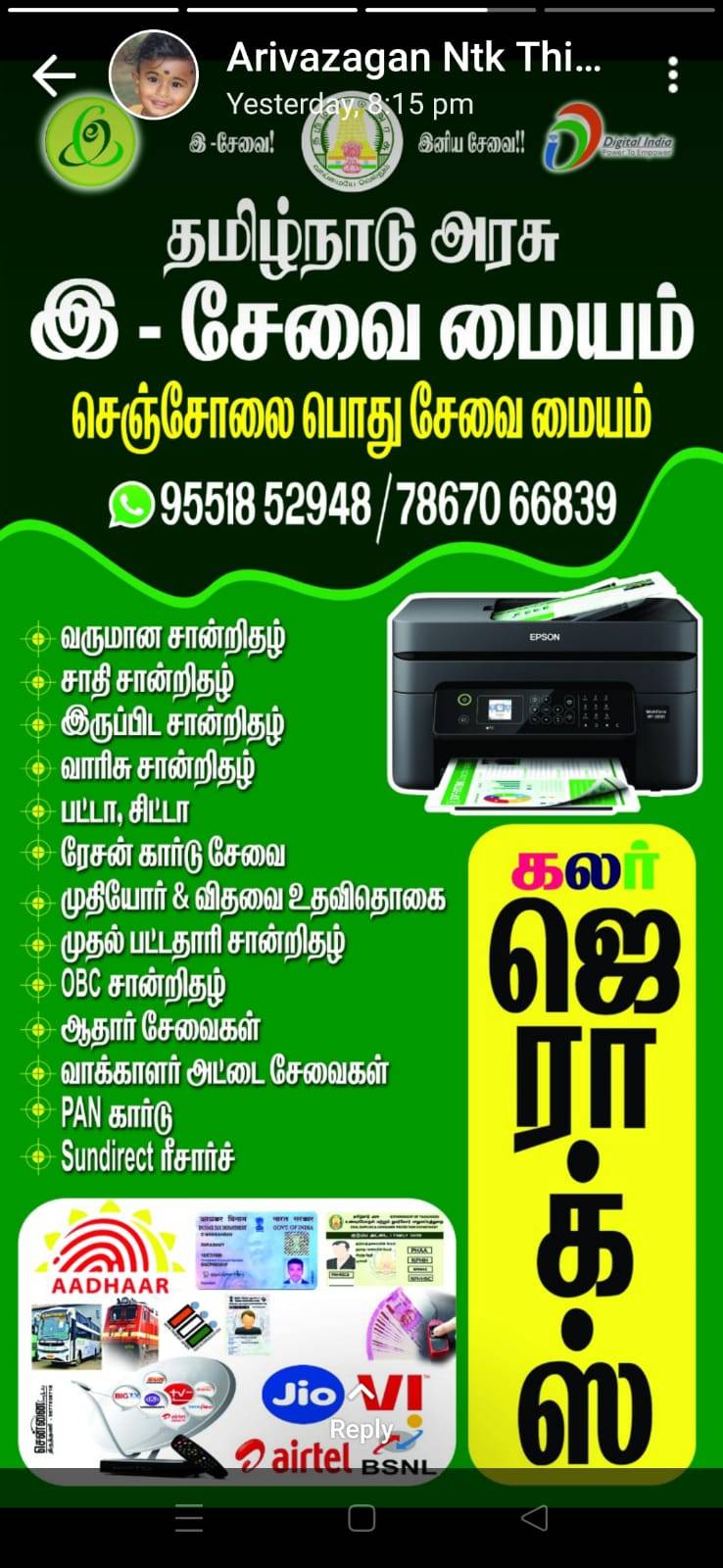
0 notes
Text
How To Choose The Right Plot In Neelankari, Chennai?
While city life is often revered because of the excellent job opportunities and amenities, a lot of us tend to get a bit too exhausted with the mere thought of living in a concrete jungle. If you want mental peace along with prosperity, the ideal choice would be to live in a place that is convenient but at the same is close to nature. So if you are looking for an ideal location to move to without compromising your convenience, plots for sale in Neelankarai, Chennai are ideal for you. Neelankarai is a beautiful coastal town that is known for its beaches and greenery. What better place to move to, right?
However, as easy as it may sound, investing in real estate comes with its set of challenges. And the process can be all the more challenging if you are a rookie to it all. But this is where we come to your rescue. Regardless of whether you are looking for a villa for sale in Neelankarai or land for sale in Neelankarai, there are a few things you need to consider first. In this article, we are going to talk about a few of those things which will help you choose the right plot to invest in.
Purpose of investment
The first thing you need to do is understand the purpose of investment. Some people choose to invest in property for the sake of investment while others intend to build a home and move there. Determine what your purpose is. This will help you make a better choice.
Location
Even when it comes to Neelankarai, there are numerous localities you will need to browse through numerous localities until you find the right one. Keep in mind all your needs and that of your family before doing this. Proximity to necessary amenities is a must.
Cost of the property
This is probably one of the most obvious things to consider in the real estate market. The property you buy should be priced right and should be within your budget. Factors such as location, amenities, developer, etc may impact the cost of the property you look into.
Reliability of the property developer
Choosing the right property developer is extremely important. The developer should be reliable. Make sure you check the work history of the developer before you decide to do business with them.
The legality of the process
And lastly, make sure there are no legal issues with the property. The legal documentation needs to be in place.
These are some tips to follow while looking for a plot in Neelankarai. You can also use these tips to buy land in ECR Chennai. For more details, visit G Square housing.
1 note
·
View note
Text
Residential Land / Plots for Sale in Kovalam , Chennai
Plot Sizes : 600 - 2400 Sqft
Plot Price : Rs.21 Lakhs Onwards
184 residential Plots spread across 12.75 Acres bang on ECR at Kovalam
Just 3 mins. to Kovalam Beach
Just 6 mins. from Siruseri
Just 12 mins. from Sholinganallur
10+ World-Class Amenities
Register Now :
Web:https://24krealtors.com
Call:8838053254
#ResidentialLand#bestlocationland#PlotsSale#chennai#OMR#Kelambakkam#kovalam#karapakkam#plotsforsale#houseforsale#home#ECR
0 notes
Photo

திருப்போரூரில் திருVilla
Premium Luxury Independent Villa in OMR.
Sq.Ft at Rs.4,200, A Price like Nowhere else in OMR.
Features
- Lowest Cost Of Ownership
- Totally Customizable
- Close To Famous Thiruporur Murugan Temple
- Close To ECR, IT Park, Hospitals Etc.
- International Designs
- Global Quality Construction
- Almost Zero Maintenance
- 9.62 Acres Gated Star Community
- Highest Expected Appreciation On The Property
- Free Hold Land
For bookings contact us: 888 030 9999, Email: [email protected], Website: www.roofvest.live
#Roofvest#Nakshatra#Villas#luxuryvilla#independentvilla#villa#luxurylifestyle#luxuryhomes#homedecor#luxuryrealestate#realtor#luxuryproperties#dreamhome#chennai call girls
0 notes
Text

Redhills , Perungavur
Madhavaram, Perungavur
CMDA Approved Plot @ Perungavur
Per Sq ft - 1395/-
Advance - 52000/-
600 Sq ft - 837,000/-
CMDA approved Plot
Balance - 10 Months Emi
Sunday & Daily Free Site Visit Contact :- sarathkumar- 9840463724
#Find a property#Plots for sale#New build homes#Property prices#Farm land for sale#Market value of land#Property online#Top real estate agents#Property development#Buy land#Vacant land for sale#New housing developments near me#Plots for sale in Chennai below 5 lakhs#Land for sale in Chennai bellow 2 lakhs#Urgent for sale in ecr#Plots for sale in ecr#Plots for sale in pudhupattinam ecr#Plots for sale in ecr pudhupattinam#Buy plots in emi#Emi plots in ecr Chennai#Emi property in Chennai#Emi loan against property#Buy property with personal loan#Buy property under loan#Dtcp approved plots ecr#CMDA approved plots#Dtcp approved plots near ecr#Plots near Chennai#Plots near me under 5 lakhs#Plots near me under 10 lakhs
0 notes
Video
Vandalur Residential Plots Property
We bring to you a new residential plots property in Vandalur, Chennai. There are around 14 plots for sale currently available within the gated community. Below are the features of the Vandalur Plots property: *CMDA approved plots * Located right behind the Vandalur railway gate * 2 kms away from Vandalur bus stand *Just 100 meters away from Manimangalam road *Shalom Matric Hr Secondary school is located nearby PRICE: 5000 per square feet Our other properties are : Commercial Beach View Property for sale in Cuddalore | https://www.youtube.com/watch?v=6ATQK... Farm Land with Guest House for sale in ECR | https://www.youtube.com/watch?v=jQIam... Beach Property in Pondicherry (Auro Beach) For Sale | https://www.youtube.com/watch?v=W9Unn... MANGO FARM for Sale in ECR (KOOVATHUR ) | https://www.youtube.com/watch?v=72RIi... Guest House for sale in Auroville, Pondicherry | https://www.youtube.com/watch?v=_3lRq... Commercial property for sale in Chrompet Opp to SARAVANA STORES | https://www.youtube.com/watch?v=QCZS0... Beach View Property for sale in Auroville | https://www.youtube.com/watch?v=3ZsqT... Farmland property for sale in Auroville (MAATHUR) | https://www.youtube.com/watch?v=4vEgQ... Farmland property for sale in ECR Kottakuppam near to Pondicherry | https://www.youtube.com/watch?v=oD6XA... Property for Sale | Buy commercial farmhouse in Auroville, Pondicherry | https://www.youtube.com/watch?v=ytG2i... To follow us on Facebook - https://www.facebook.com/vijayampromoter Instagram: https://www.instagram.com/vijayamprom...
0 notes
Text
Everything You Need To Know About Chennai’s OMR Before Buying Yourself a Property
OMR (Old Mahabalipuram Road) in Chennai also known as Rajiv Gandhi IT Expressway or simply IT Expressway has become the IT Hub of Chennai bustling with Office go-ers and many small businesses. It is the major road connecting Chennai with Mahabalipuram and Chengalpattu district. This area has become a home to many prestigious IT and BPO companies. Based on the development and growth of the OMR road, it was categorized into 2 major zones. Zone-1 is from Madhya Kailash to Sholinganallur and Zone-2 is from Sholinganallur to Kelambakkam.
In recent years real estate in OMR has been developing and expanding rapidly. The property prices have also witnessed an appreciation about three times what they were in 2007. There are many available Properties For Sale in OMR. The growth of this region fuelled the real estate activity and made this place desirable for potential new homeowners.

Top Reasons to invest in a property located at OMR
1.INFRASTRUCTURE
The Infrastructure in OMR is well developed by the government by giving priority to sanitation, water supply, sewage lines. It has been organized in such a way as to ease the traffic congestion and increase greenery. These amazing developments have attracted massive builders to build residential apartments and Flats for sale in omr below 70lakhs
2.PROXIMITY
OMR is the IT Hub of Chennai and almost all big companies have an office located at the OMR. One of the major advantages of living in the area is the proximity it has to the offices, schools, colleges, and recreational centres. Chennai Airport is 30 minutes drive from OMR. It connects to almost all major growing southern suburbs in Chennai. Accessibility to entertainment hubs from OMR is an additional enhancement to your living.
There are many reputed schools in the OMR surrounding like
Padma Seshadri School
Gateway - The complete School
Delhi Public School
DAV CBSE School
Abacus Montessori School
There are also many reputed and highly qualified educational institutions like NIFT (National Institute of Fashion Technology), Asian College of Journalism, SSN College of Engineering, Hindustan College of Engineering, St Josephs College of Engineering, Sathyabama Deemed University, Jeppiar Engineering College.
The entire stretch of OMR to Madhya Kailash has great connectivity to the main city. There are also various railway and bus services provided by the government around the area.
3.AMAZING RESIDENTIAL PROJECTS
To buy properties in Chennai is not an easy choice to make because of the exorbitant growing prices. To own a premium style apartment inside the city one has to settle themselves to spare at least a crore by minimum. Flats for sale in OMR below 70 lakhs is a great deal for people who don’t want to settle for an average apartment. Properties in OMR offers you the best at low-cost pricing without having to settle down on quality with amazing amenities. Imagine coming home from work after a long hard day and driving back to traffic and a pollution-free environment with serene landscapes and fresh air. Sounds dreamy right? OMR offers such scenic views. Also, ECR is not too far away from the area which also has breathtaking coast-line sights.
4.EXCELLENT INVESTMENT OPPORTUNITY
To Buy Properties in Chennai for investment has become a huge deal after the real estate boom that happened 15 years before. Due to its locality and infrastructure, it has become a great investment option for home buyers, multinational companies, real-estate developers, and investors. Within 5 years OMR has seen an appreciation of about 50% and a 21% hike in property value in the year 2014. According to real-estate experts, 1 acre of land in OMR costs around 7,40,00,000 in 2021. So, buying a property now in OMR will ensure that your property gets an immense appreciation in 5-10 years. Even if you are not planning on moving right away to OMR, it is an excellent investment opportunity. The demand for houses in OMR has gone up due to the rise in the number of IT/BPO and several small Companies around the region. A simple 2BHK Apartment could fetch you a rental income of about 18,000 - 20,000 a month.

5.RECREATIONAL AND HANG-OUT SPOTS
Various recreational places are available in and around OMR that is remarkable.
ISCON TEMPLE- This mesmerising place of worship is a quintessential monument to visit with your friends and family. The gorgeous architecture and the stunning interior design oozes charm and divinity when entered you enter the temple. It is opened to people of all castes and religions. The property is a stretch of 1.5 acres and has five floors of stunning architecture.
DAKSHINA CHITRA- Dakshina Chitra is a live museum of arts, crafts, the lifestyle of south Indian states. It gives a closer insight into the villages of Kerala, Andhra Pradesh, Karnataka and Tamil Nadu.
BOATING AT MUTTUKADU- The enchanting lake of Muttukadu checks all the boxes when it comes to a perfect evening out with your loved ones. It offers many recreational sports activities from windsurfing and water skiing to rowing and speedboat riding. If you are an adrenaline junkie, you can also opt for a spine-chilling water scooter ride!
With such impressive recreational activities in and around OMR, and after getting insights about the pros of advantages of investing in OMR it is about time you consider this place for your next real estate investment.
#Properties for sale in OMR#Flats for sale in omr below 70lakhs#Best Investment Properties in Chennai#Brand new flats for sale in Chennai
0 notes
Text
5 common mistakes to avoid while buying a Plot | Adityaram Properties
Since ancient times, real estate has been a popular investment option in India. Even though we have many other investment options nowadays, purchasing a plot is regarded to be a preferable alternative because it delivers a high return on investment. As a result, it's critical to recognize them in order to make the best option possible. Listed below are a handful of them.
Not doing proper research before buying a plot
Most people conduct an extensive study before making large purchases, such as a car, television, or even a cell phone, in order to establish the product's value before investing their money. When purchasing a plot in ECR, the same level of diligence, if not more, is required.
Not physically inspecting the land
Many competent real estate portals can now assist you in finding an acceptable piece of land while you are sitting at home. However, you should not be too lethargic to make an online transaction because the Internet is full of con artists. While Google Earth is a fantastic tool for getting a general idea of the property and its surroundings, you should not use it to investigate the property's history or physical features.
Assuming that all fees are covered
Most first-time property buyers believe that the cost of purchasing DTCP-approved plots in ECR or elsewhere is simply the price paid to the seller. There are several other costs associated with holding land, such as the cost of registration and obtaining licenses from the municipality. Staying up to date on the land industry might assist you in calculating the entire cost of occupying a plot of land.
Assuming All Plot Is ‘Buildable'?
In several Indian towns, the term "buildable" refers to land that has been granted a building permit. In other cities, however, it indicates it is physically ready for construction. However, it's crucial to look at the property's physical characteristics, such as the type of soil, if the area is ideal for building a disaster-proof house, and how cost-effective construction can be done there.
Fail To Read the Agreement Paper
Property contracts are frequently overly long. As a result, many people don't read it completely before signing. However, this should be avoided because the agreement may contain terms and circumstances that are harmful to your profit prospects. If the language in the agreement paper is too unclear for you, you should get legal advice.
Land investment has a lot of potential for making money. To avoid these blunders, it's critical to employ a real estate professional and conduct thorough research on the property before buying a plot.
Contact Us
Adityaram Properties
50, SH 49, Adityaram Nagar,
Panaiyur,
Chennai – 600119
Call us: 76677 77777
0 notes
Text
Pacifica Aurum - Pride Towers, Apartments Build to Embrace Happiness.

Pacifica Aurum - Pride Towers is a brilliantly designed gated community by the Pacifica Companies in Chennai. The project is situated on Old Mahabalipuram Road.
The project is spread over 140 acres of land with 11 stages including a planned club over 1 lake sq ft. with an international clubbing experience and spectacular landscaping planner with central open space stretching over 4 acres. With a total of 646 housing units expected. Pride Buildings, 2/3 BHK apartments in Chennai is a benchmark for urban living, including all aspects of contemporary lifestyle. Planned and designed by an internationally renowned architecture company – Burt Hill, Pacifica Aurum combines 2/3 BHK Apartments in Chennai with all the amenities that characterize a truly global lifestyle.
Amenities Offered
Pacifica Aurum provides facilities such as a basketball court, a jogging track, an amphitheater, a lawn tennis court, swimming pool, gym, cricket field, clubhouse, children's playground, open-air playground, and many more.
Key points
Besides being beautifully built and having all the requisite facilities, the location of the project also adds the preeminent highlight to the same.
Located in the heart of Chennai’s IT corridor
5 minutes away from the local groceries stores like Nilgiri’s to buy your daily conveniences
Hindustan International school, Kidzee Padur playschool, and Gateway International School is just a stone’s throw away from Aurum
Plan weekend relaxation activities at the ECR beach which is a 20-minute drive from Aurum
24×7 ATMs of leading banks are available near Aurum
For the aspiring MBA’s, Engineers, Doctors CA’s, etc. – Hindustan University is just 1.5 km from Aurum
Builder’s Portfolio
Since investing in property is a lifetime commitment for most of us, we should check the history, background, and accomplishment of the builder to see if they are trustworthy.
Pacifica is a renowned real estate development firm founded in 1978. The business has expanded exponentially over three decades thanks to an unwavering commitment to opportunistic buying, sustaining a high degree of liquidity, and finding the right property at the right time. Pacifica's extensive portfolio of real estate contains hotels, mixed-use developments, construction projects, master-planned neighborhoods, offices, commercial complexes, retail shopping malls, senior housing properties, single-tenant rentals, multi-family leasing and sales projects, and single-family communities throughout the United States, Mexico and India. Pacifica entered the Indian real estate business, beginning operations in 2004-05. Continuing its tradition of unique urban systems through a wide variety of asset classes, Pacifica has made quite a ripple in investors' minds across the country. Focusing primarily on the desires of the emerging middle class, the company has leveraged its decades of expertise in real estate to ensure an improved living experience and optimal room distribution in any project.

Whether you want to reside, give it on rent, or looking for a property to invest in. The project offered by Pacifica Company is not just available at an affordable price but also comparatively budget-friendly making “Pacifica Aurum - Pride Towers” a worthy and non-negligible property to invest in for all the desired purposes.
Now, Live a Luxurious and comfortable life with your Family at Pacifica Aurum.
0 notes
Text
1 Acre 30 Cents Land Sale In ECR VENGAMBAKKAM
1 Acre 30 Cents Land Sale In ECR VENGAMBAKKAM PROPERTY ID NO 2091 1 Acre 30 Cents Land Sale In ECR VENGAMBAKKAM Land Extend: 1 Acre 30 Cents Facing: North Frontage: 100 Feet Road Land type: Dry Land Near By : Thirukazhukundram , Egai village On Road site Price: Rs.5.20 Crores Call us Galaxy Realty 8681073762 / 9791020069 https://chennaipropertysale.com/wp-content/uploads/2024/05/2858832a-4b75-4b35-b209-2c4a7fb8280d.jpeg?v=1716361753 More Details Photos pls visit this link👇 https://chennaipropertysale.com/1-acre-30-cents-land-sale-in-ecr-vengambakkam/ #ACRESALE, #ECR, #LAND
#1 Acre 30 Cents Land Sale In ECR VENGAMBAKKAM#1 acre land for sale in ecr chennai#acre sale in ecr#beach plots for sale in ecr chennai#beach property for sale in chennai#beach side land for sale in chennai#Beach side land injambakkam for sale#Beach side land injambakkam price#Beach side land vgp#Beach side land vgp for sale#Beach side land vgp injambakkam for sale near#Beach side land vgp injambakkam for sale price#Beach side land vgp price#beach view land for sale in ecr#buy property in ecr chennai#chari avenue palavakkam#Chennai beach side land vgp#CMDA Approved plots in Injambakkam#commercial land for sale in ecr chennai#ecr beach plot sale#ecr beach side property#ecr chennai beach land#ecr chennai properties#ecr commercial chennai#ecr land chennai#ecr land for sale in chennai#ecr land price#ecr land value#ecr on road properties#ecr plot for sale
0 notes
Photo

ECR - DTCP Approved plots for sale at best Price!! Plot size Starting from 750 sqft & Per sqft Rate 650 only!! More Details Contact : 9600115472 #Land #property #landsale #landforsale #propertysale
0 notes
Text
The Ultimate Guide to Category Management
By Andy Palmer

What Is Category Management?
The concept of Category Management or Category Planning originated in the late 1980s. It followed the research of Brian F. Harris, a former professor at the University of Southern California. It delivered a big change in the way retailers and suppliers worked. Instead of competing with each other, it encouraged suppliers to work together with a focus on the consumer when making retail decisions. For the first time, the range of products offered for sale by a retailer was grouped together with similar or related products based upon the consumer need that they met. These ‘product categories’ were then managed as a strategic business unit (SBU), and no longer as stand-alone products or brands.
According to Harris, the reasoning behind Category Management is, the following:
Force consumer focus when making retail decisions.
Develop a strategy for differentiation and competition.
Provide a model for collaboration.
Promote information sharing to help better decision-making.
Provide greater strategic logic when making tactical decisions.
Clarify decisions about asset and resource allocation.
Help further clarify employee responsibilities.
This process allows for better management of the relationship between customers, retailers and suppliers. Ultimately, all three parties moved towards a win-win-win situation.
Watch Our One Minute Video to Hear and See More About It:
youtube
Category Management Definition
What we call ‘Category Management’ today developed from the concepts that underpin Efficient Consumer Response (ECR). This looked to increase the level of services to consumers through close cooperation among retailers, wholesalers, and manufacturers.
There are a few formal definitions of it, which can lead to some ambiguity. However, most contain the central theme that Category Management is about better meeting the needs of the consumer through supplier collaboration. Below are some examples:
Category Management Association defines it as:
‘Trading partners collaborating to decide the point of optimisation in, pricing, promotions, shelving, and assortment to maximise profitability and shopper satisfaction..’
Nielson defines it as:
‘A process that involves managing product categories as business units and customising them [on a store by store basis] to satisfy customer needs.’
The Institute of Grocery Distribution (IGD) defines it as:
‘The strategic management of product groups through trade partnerships which aims to maximise sales and profit by satisfying consumer and shopper needs.’
Business Dictionary defines it as:
‘Marketing strategy in which a full line of products (instead of individual products or brands) is managed as a strategic business unit (SBU). It is based on the concept that a marketing manager [Category Manager] is better able to judge consumer buying patterns and market trends by focussing on the entire product category.’
Our Definition:
For us at MBM, we see Category Management as an essential activity. We like to view it as a three-legged stool. It keeps the shopper, retailer, and supplier at the heart of all decisions. In fact, we see it as a ‘business as usual discipline’ that maximises every stage of the process. Our simple summary is:
‘Identify more opportunities.
Sell more opportunities.
Land more opportunities.’
What is CPG Category Management?
CPG stands for Consumer Packaged Goods. Also known as FMCG, or Fast Moving Consumer Goods. These are products that are fast moving and low cost. These are typically products that have a short shelf life, either as a result of high consumer demand or fast deterioration. CPG/FMCG goods are meats, fruits, vegetables, baked products, and dairy products. Therefore CPG Category Management is basically the skill of managing a group of these products within a retailer, in order to meet the shopper’s needs best.
The Benefits of Category Management
Historically, categories would contain lots of brands from different suppliers. The situation would arise that every time brand X promoted its products, the sales of brand Y would go down. One benefited at the expense of the other. They were competing with each other. There was, however, no net gain for the retailer, only cannibalisation.
Category Management Example:
For instance, Brand X sells 100 units per week. Brand Y sells 100 units per week. So, the category sells 200 units per week. Brand X promotes, the following week, and gains 50 units, thus selling 150 units in total. Brand Y does not promote and loses 50 units to Brand A, selling 50 units in total. The category has not gained from the promotion and still sells 200 units, despite the promotion of Brand A.
Retailers recognised the need to grow their own business and to better meet consumer needs. To do this they needed to change the way they worked with suppliers. This is where Category Management comes in. A key premise is that all activities need to be beneficial to the retailer and shopper. Not only of benefit to a single supplier. For example, promotions, range layouts and new product development (NPD) / existing product development (EPD) have to be in the interest of all.
A further advantage came from working with the supplier base. The supplier’s vast knowledge of the category could be pooled. Lastly, suppliers can share and help manage some of the workloads in growing categories. This frees up retailers’ resources. At its core, Category Management is about improving results through retailer and supplier cooperation which, in turn, creates greater value for the customer. As mentioned earlier, it’s a three-legged stool:
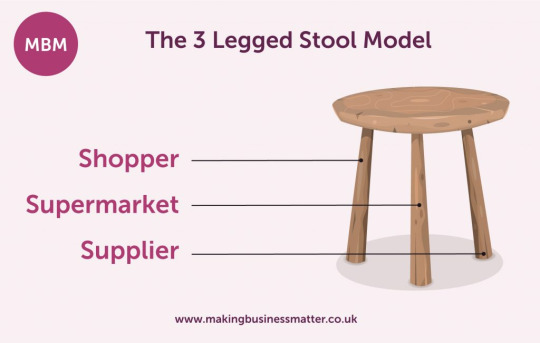
Concerns Surrounding the Process
A key feature of the Category Management process is the close relationship between supplier and retailer. This, however, has led to fears that they might work in ways that aren’t providing the best value to the customer. The concern is, that, by working so closely together they might undermine some of the principles of free markets. In the UK, there are strict antitrust laws in place to promote competition and prevent cartel behaviour.
In 2007 some major supermarkets fell foul of these following their pricing practices earlier in the decade. They were found to have worked with their dairy suppliers to fix prices. They added an extra 15p onto the price of butter and cheese and 3p on milk. In all, it is thought to have cost consumers an extra £270m. This action was judged to be in breach of UK competition law, where business work together in a way that harms the customer. They were given a £116m fine by the Office of Fair Trading.
This, however, is notably very rare. Generally, the consumer reaps real and substantial benefits from the closer working relationships Category Management brings.
What Is a Category Manager?
A Category Manager looks to maximise the profit of the specific ‘Category’ that they look after. In essence, the role of the Category Manager is all about driving sales. To do this, they will need to have good analytical skills to assess complex shopper data. They also need to be able to translate that data into meaningful information. This should help further the profitability of their category, the essence of Category Management. In doing so, they will also be better meeting the needs of the consumers that shop the category.
The Category Manager is an expert. They have in-depth knowledge regarding the specific group of products that make up their category. Furthermore, they have overreaching accountability for their successes and failures in terms of sales.
A key part of Category Management is to use their specialist knowledge to work with retailers. Retailers can benefit from their depth of understanding. They can draw on their pool of data to help understand how consumers shop the category. In turn, they will look to make sure that their products are placed and presented in the best way in-store.
What is a Category Development Manager?
The lines between an Account Manager and a Category Manager are becoming blurred. A Category Development Manager can either be a person that focuses on managing the account or someone that manages the category. In essence, both need to happen. Some companies choose to separate the National Account Manager and the Category Manager, others blur the lines. The titles are almost irrelevant. The key is that both the supermarket and the shopper’s needs are met because achieving both of these needs will deliver the best performance.
What is a Category Executive?
A Category Executive is a person that is learning the ropes of Category Management. They are more junior than a Category Manager. The responsibilities of a category executive are predominantly category analysis. They will analyse the data to identify opportunities, which they will then share with the Category Manager. The Category Manager will then guide them further. Category Executives support the Category Manager to achieve their KPI’s. A great Category Executive learns what a great Category Manager does, and aims to become that as soon as possible.
Category Manager Salary
According to Glassdoor, pay for Category Manager jobs in the UK varies across regions. The range is £34,000 — £69,000. Currently, the national average is £45,675 a year.
What Do Category Managers Do?
The Category Manager is the person who builds a close working relationship with the customer, the retailer. This allows them to give useful consumer and category insights. Their main task is to be the key influencer of category strategy and tactics.
Their key role is to recommend strategies and activities which benefit the whole category. As earlier noted, categories are treated as stand-alone strategic business units, consequently, all actions taken should benefit the overall profitability of the category. Through the use of data and analytics, strategies should always look to deliver overall category growth. Furthermore, their efforts should have a positive impact on shopper satisfaction.
This may include:
Changes to the assortment.
Pricing recommendations.
Range reviews.
Develop new point of sale (POS) materials.
Revamped planograms.
Category Manager Responsibilities
Below, is a list of some of the other key responsibilities of Category Managers:
Undertake Periodic Range Reviews
This is to consider new lines, seasonal lines and new consumer trends. This is important to maintain category growth.
Review of Rate of Sale
Reviewing the rate of sale (ROS) will help ensure that the range is profitable and includes the best-selling lines. Moreover, it should also deliver consumer choice. Consumer choice should be at the core of all Category Planning decisions.
Track Customer Loyalty
Key metrics of customer loyalty need regular monitoring. These will include:
Repeat purchases.
The frequency of purchase.
The weight of purchase.
Product penetration.
Switching analysis.
Ensure Space Optimisation
This means avoiding out of stock products and maintaining a profitable product assortment.
Execute a Fixture Strategy with the Retailer
This will focus on visual merchandising, considering, flow, brand blocking and multi-location siting for products. All fixtures need to be easy to shop and be profitable.
Analysis of Promotional Activity
This is to understand the most effective mechanics in driving trials and sales. This involves the tracking of sales and promotional support by stock keeping unit (SKU). It is important to make sure that they complement each other. For example, SKU ‘A’ may have a higher share of promotional support than it makes in sales. Reallocating some promotional events to other SKUs could add positive sales to the category, increasing usage and penetration.
What is Category Analysis?
Category analysis is the skills of analysing a category. Lots of people have the skill to analyse data. Effective category analysis aims to identify opportunities that provide a win for the Shopper, the Supermarket and the Supplier. Many Category Managers analyse the category, yet they only regurgitate the data onto Powerpoint slides, which they then present to their Buyers. Effective Category Management requires the Category Manager to spend a lot of time analysing the category to identify opportunities, and then presents not all their ‘workings out’ but why the opportunity should be seized.
What Is a Category Captain?
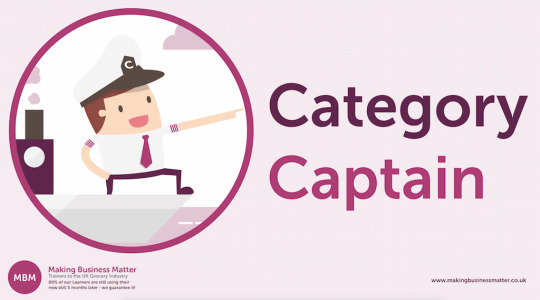
As discussed earlier, each retailer contains many categories. In fact, the average UK supermarket could contain as many as 100 categories. To maximise sales, each category needs to be actively promoted. Understandably, however, the retailer doesn’t have a huge depth of knowledge (and analysis) of the intricacies of each category’s product or brand. They, therefore, outsource this to an expert. This is where the ‘Category Captain’ comes in.
Typically, the Category Captain, or as it is sometimes called ‘Category Champion’, is a leading manufacturer or supplier within the category. For instance, for ‘Breakfast Foods’ the appointed Category Captain could be The Kellogg Co. Or, for ‘Packaged Beverages’ it might be Coca-Cola or PepsiCo. They are appointed by the retailer for their ability to manage a specific category. This is often regardless of their size or turnover. It is, however, due to a particular skill and expertise in identifying, coordinating and delivering opportunities.
By appointing a Category Captain to lead the category, the retailer benefits from their in-depth category knowledge. Furthermore, they will often take the lead in broader aspects of Category Management. This may be by coordinating and managing promotional plans or overseeing larger more in-depth category wide plans.
Other advantages include:
Existing investment in consumer research.
Detailed knowledge of pricing.
Knowledge of the correct products to offer e.g. sizing.
Extra insight for in-store displays and presentation.
Knowledge of inventory and forecasting to ensure products are always available.
Typically, they are the eyes and ears on the high-street for the buyer. They are often their first port of call.
What is a Category Specialist?
Within Category Management, there are two types of category specialists; people and companies. A person that is a category specialist is someone that focuses on one category long term. For example, a supermarket wine buyer would be one. This person is likely to work in wine for most of their career. A company category specialist is a company that focuses on winning that category. For example, Toys R Us wanted to be the place for families to buy toys, or Staples (Office Depot) want to be the place for office equipment and stationery.
The Category Management Process
The Category Management process is structured and data-rich. It is about organising categories into independent business units. Furthermore, it provides a framework for retailers and suppliers to work together. The results being, greater profitability, efficiency and added value for shoppers and customers.
The Category Management 8-Step Cycle
The most famous model for Category Management is the 8-Step Cycle. It was originally developed by Brian F. Harris with the Partnering Group in 1997. Sometimes called the ‘Brian Harris Model’, it is a formal and structured category plan or set of actions to follow. The model has evolved over the past two decades. You can find it in different forms where it has been adapted, and the name sometimes varies between ‘process’ and ‘cycle’. In addition, some Category Managers follow a five or six step category plan. Nonetheless, most of the key elements are included, as we will discuss further below.
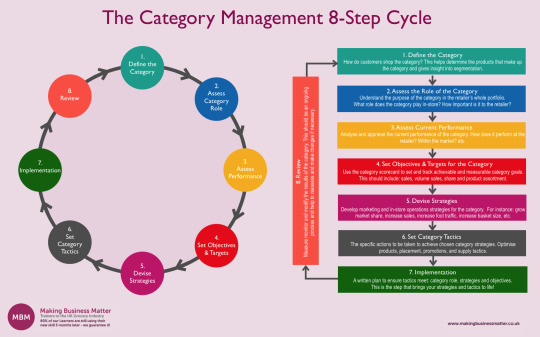
Step 1. Define the Category
A category should consist of products that serve the same or similar purpose. They will likely belong together in the minds of the consumer. Effective Category Management requires Category Managers to, therefore, consider how consumers shop the category when defining it.
Category Planning is about increasing the overall profitability of the category as a whole. Within the individual category, some items will deliver different levels of profitability. They will also need to meet different consumer needs. We, therefore, need to develop subcategories to further break it down. This allows for the execution of different strategies.
Let’s consider how this works in the ‘Soft Drinks Category’ for a moment. Below, is a list of some of the subcategories:
150ml cans for fast consumption.
330ml cans for sole consumption immediately.
500ml resealable bottles for when you’re on the go.
Low (or zero) calorie vs standard.
Reduced sugar vs standard.
1.0l / 1.5l / 2.5l bottles for sharing with the family at home.
Larger bottles for parties or special occasions.
Multipacks for packed lunches.
Limited editions and seasonal.
Read an expert guide on merchandising from our friends at Sodalite.
Further Examples of Category Management in Retail:
Let’s now think about the ‘Cereals’ category. Retailers may segment Cereals into one of the following:
Hot v Cold Cereals, where usage, or season, is important.
Adult v Family v Child, where the emphasis is on the consumer, and packaging is the priority.
What Does ‘Business Category’ Mean?
A Business Category is a group of products within a supermarket/retailer. Categories are defined by the business in order to make Category Management easier. The proper way to group products is by how the shopper/customer sees those products. For example, if a shopper shops fruit, they group fruit into ‘everyday’, ‘special’ and ‘other’. Therefore the categories are those 3. The supermarket should then manage those as categories, ensuring that products within those categories are not promoted at the same time.
Challenges for Category Managers
Challenges can occur for instance, where Categories could not, logistically, sit together in the store. For example the ‘Milk’ category, this seems an easy and obvious category to define. Yet, it poses a logistical problem, fresh milk, which needs to be chilled and UHT milk which needs storing at ambient temperature. Typically, this is resolved by creating a ‘Super Category’, such as ‘Milk’. This is then further segmented into ‘Fresh Milk’ and ‘Ambient Milk’.
Another challenge might be the concept of a ‘World Foods’ aisle in the store. This clearly takes into account the consumer decision tree. It follows the thought process many of us take when deciding upon an evening meal. For instance, choosing between a Chinese or Mexican meal. Presenting them side by side responds to research in this area.
Furthermore, defining a category can become tricky when deciding on lines to include. Consider ‘Snacks’. This is often segmented into crisps, snacks and nuts. It is then further divided into single packs, sharing packs and multipacks. Clear definitions are critical to the strategy for the category. For instance, retailers and suppliers will look at, in detail, the size threshold for when a single pack becomes a sharing pack. Or, for that matter, whether, Pringles is a crisp or a snack.
Step 2. Assess the Role of the Category
Now that we have defined the category, it is necessary to decide its role. It is important to consider how the category will work in-store, and how it fits with the retailer’s whole portfolio. Moreover, assessing the role of your categories and how they relate to each other in-store will aid in understanding the total basket profitability of your customer. It is important to check the potential profit margin for both the retailer and the supplier. All efforts surrounding the category should be consistently contributing to its purpose or ‘category role’. This is important to ensure the efficient allocation of resources, that resources go to the most deserving categories. For instance, categories with large share and/or positive outlook and/or capable of driving footfall in store.
The following are 4 types of consumer-centric category segmentation. These can be used to help assess the role of the category:
Destination Categories
This is one that drives footfall into the store and will be a deciding factor in the choice of a store by a consumer. For example, a store that is well known for excellence in its fresh bakery, sandwiches or a range of beers. These may not be highly profitable categories but have a significant investment in them by the retailer and supplier. In areas, such as range, space and availability, it can enhance consumer loyalty to the store and deliver consumer traffic. These Categories will tend to be 5–10% of the total category count.
Core Categories
These account for 50–70% of the categories. They are the regular, frequent use, products. For example, milk, snacks, bread, biscuits, confectionery, coffee, and tea. These are the categories which compete heavily in terms of price, space, and promotions.
Convenience Categories
Convenience categories account for 10–20% of categories. Generally, these have less space in-store and fewer promotions. These complete the retailer’s assortment of products. Typically, these are products not usually found on a routine shopping list. However, this category aims to guarantee a one-stop-shopping experience. Furthermore, its premium pricing plays an important role in enhancing margins. Categories such as shoe polish, greeting cards, and electricals are typical examples.
Seasonal Categories
These account for 5–15% of the store offering and, by definition, have a seasonal bias. This will dictate space, range, price, and promotions. For example, ‘cereals’ will adjust in favour of porridge in the winter and revert to ‘ready to eat’ (RTE) cereals for the rest of the year.
Another aspect of Seasonal Categories is, for brief periods, that they become ‘Destination Categories’. Take, for example, fireworks on November 5 (in the UK), or roses on Valentine’s Day. This can also generate sales in Core Categories for reasons of consumer convenience.
Step 3. Assess Performance
Category assessment is the periodic review of categories and subcategories. It is a regular appraisal of the current performance of the category. This step involves evaluating retailer sales data. This will help decide the sales, share, and profitability of the category. Furthermore, you will need to do an in-depth analysis of key competitors.
As a starting point, perform a detailed SWOT analysis. This will show useful category insights. For instance, where more investment may yield greater profits. You may, for example, discover that focusing on innovation or adopting an aggressive pricing strategy could help. Furthermore, you may discover that re-categorisation is necessary. A recent example of this is the introduction of the ‘Sugar Tax’ in the UK. A re-categorisation of soft drinks may be necessary to adapt to the changes in legislation.
Suppliers will play a major role in this analysis. They often bring data-driven evidence from agencies such as Kantar, Nielsen and IRI. They will also have access to shopper research and retailer proprietary data, such as Dunnhumby or Wal-Mart (Asda) Retail Link. This is for their own lines only. Note, ‘Category Captains’, however, will have access to the full service.
The insights gained from this part of the Category Management process are significant. The data is rich and highly detailed, providing information on:
Volume.
Top sellers.
Top profit generating lines.
Out of stocks, and quantification of lost sales.
Basket analysis (e.g most common combination of products in the same basket).
Top, and worst, performing stores.
Time of day analysis (e.g when is the peak selling time for a product?).
For further insight, take a look at our helpful and effective Category Management Tools to help identify the size of the opportunity for your category.
Step 4. Set Objectives & Targets (Scorecard)
Following category assessment, the next step is to set achievable and measurable goals for, sales, volume and margin.
This information should be tracked in a Category Scorecard. A very common document within FMCG suppliers. It will help you track:
Sales
Volume Sales
Share
Product Assortment
Step 5. Devise Strategies
Which strategy is right for each category to meet its goals? The process is circular in nature within this part of the business process. The supplier and retailer are building strategies which, in turn, determine the category role.
Here are seven strategy examples:
Traffic Building Strategy
This lends itself to ‘Destination Categories’. The aim is to attract the consumer into the store — and for them to buy from the category. However, this strategy is also used to attract consumers to ‘Core Categories’. This is because, price sensitivity, promotions and frequent purchasing benefit from shopper traffic. The most obvious example is petrol. It draws consumers from a wide area. They can then shop in the parent store.
Turf Protecting Strategy
This is about defending existing sales and market share. It is in response to competitor activity and is in its nature a reactive strategy. Consequently, it has ramifications for profit margins. Therefore, it is used as a last resort. Nonetheless, it is important for the perception of the store and it also maintains (a level of) competitiveness.
Transaction Building Strategy
Used to quickly build sales of a particular category by selling larger volumes. The goal is to drive up the average weight of purchases per visit. It is achieved through packagings, such as multipacks and larger packs. Also through aggressive pricing and promotions. Examples would be, ‘Core Categories’ such as ‘Crisps’ and ‘Soft Drinks’.
Profit Generating Strategy
This strategy emphasises the high margin categories or subcategories, which also command high consumer loyalty. They are, therefore, less price sensitive. This, for example, may include a retailer’s ‘Own Brand lines’.
Excitement Generating Strategy
The strategy is about creating excitement in a category, or subcategory. Often by innovation, or tapping into a relevant and current social trend. Typically, this falls into the ‘Seasonal Category’. For instance, new flavours of ice cream introduced during a hot spell. At times, this can also fall into ‘Core Categories’. For example, ‘named’ cans of Coca-Cola or limited edition of chocolate bars.
Cash Generating Strategy
The focus here is on large volume, high turnover categories. Those that bring balance to the retailer’s cash flow.
Image Enhancing Strategy
This strategy focuses on the intangible aspects of the retailer offering. Those that improve the overall image and engender loyalty. For instance, quality, variety, price, service, convenience, presentation and delivery.
Step 6. Set Category Tactics
Category tactics are the tools in your planning toolkit. They enable category strategies to be fulfilled. These include:
Pricing
Promotions
Penetration
Product Assortment
The supplier, particularly the ‘Category Captain’ will be expected to lead the data analysis. This helps them to decide the level, frequency, and timing of tactics. Furthermore, it will also depend upon insight from agencies such as Nielsen, Kantar, and IRI.
The adoption tactics will vary by retailer, by store and SKU. For instance, an SKU may have a ‘Destination Category’ in one retailer, and ‘Convenience Category’ in another.
Step 7. Implementation
This is arguably the most important step of the Category Management process. That is because it involves executing the plan that you have already developed in steps 1–6.
This is where the planogram comes into play. The planogram is a computer-developed diagram showing retailers where and how to display category products at individual stores. It is, in fact, the embodiment of Category Planning and is the most effective method for executing the plan in-store. It ensures the correct mix of products, with the correct adjacencies, are implemented. Furthermore, the planogram also ensures that it is at the correct price where shoppers interact with the category.
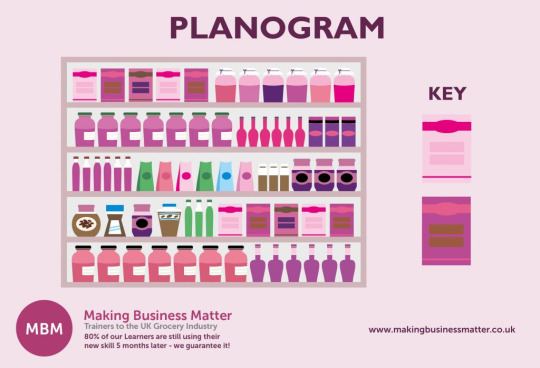
Merchandising managers will often manage a team of space planners to create the plans. Alternatively, they will outsource to merchandising companies with display optimisation experience. Their role is to maximise the return on shelf space. They will also consider ease of shop. Consequently, the goal is to make the shopping experience more pleasurable and less stressful. This is achieved by following industry standard space planning principles, such as:
Examples of Industry Standard Space Planning Principles
Merchandising by product subcategory.
Displaying cheapest to the left.
Positioning large products on the lower shelves.
Accurate implementation of the plan is important. It is key to make it as easy as possible for store put in place. Imaged plans with product images sourced from companies, such as Brandbank can help do this. It is also possible to take the planogram one step further and use virtual reality technology. Using VR can help to improve planogram legibility. Many merchandising managers agree that this approach increases in-store compliance. After implementing category plans, the retailer now monitors the profitability of the category. Now ‘Canned Soup’, for example, is treated as one unit. Each brand is no longer considered in isolation.
Step 8. Review
The 8-Step Category Management process requires regular review, and changes, where necessary. This is because it is important to keep up relevance in a changing business environment. Furthermore, category dynamics often change. Strategies and tactics need to adapt to stay competitive. As a result, this is a critical stage of reflection and analysis of earlier assumptions.
A review of successful Category Planning would expect to see:
Cost reductions through supply chain management, such as, out of stocks and wastage.
Improved consumer satisfaction. For instance, availability and ease of store navigation.
Increased market share, versus competitor retailers.
Increased sales and improved margins.
Limitations
In our interview with Mark Taylor, the author of ‘Who Killed Category Management’, below, he discusses some fascinating limitations of rigorously following the traditional Category Management process:
youtube
A Streamlined Process
The average grocer in the UK has over 100 categories which mean that each category will have a full category plan every 2 years — if it’s lucky!
Following the 8-Step Category Management process fully takes between 16 and 24 weeks (excluding implementation). It requires a team of at least 12 people and involves the completion of between 60 and 100 different data templates. Furthermore, it requires an external consultant or facilitator just to organise and run each category plan. Consequently, it is often poorly implemented and generates mixed results.
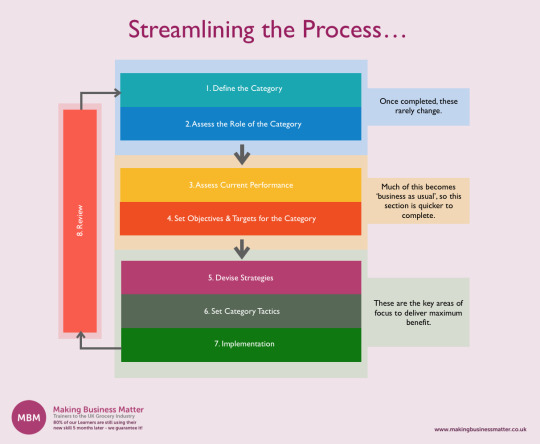
It is still relevant today, but in a more streamlined version and more applicable, for example, only when you are doing a ‘Big Category Plan’. Above, is an adapted version which is a little more pragmatic. We’ve identified the areas which will very rarely change and require fewer resources. Moreover, we also show the things that are part of your day to day Category Management. These become easier to complete as you’re always doing them. Lastly, we highlight the areas where we believe you should be focussing the most attention and resources. These are the areas that if you invest the time will give the greatest benefit. However, don’t forget the need for constant category review.
We’ve further adapted this into something that we feel is a little more relevant for today, The MBM 73% Funnel.
The MBM 73% Funnel
Our research into Category Management landing opportunities arrived at an astonishing conclusion.
73% of opportunities fail to make it in-store.
Often due to a lack of understanding of the needs, motivations, and barriers of the shopper. Here at MBM, we devised the funnel to help Category Managers focus, and ‘funnel down’, on what is important. The idea is that by following this process you will develop greater shopper understanding. This, in turn, will help increase the landing rate of opportunities that reach the store. In essence, we believe Category Management is a ‘business as usual’ process, that is there to ‘identify’, ‘sell’ and ‘land’ more opportunities.
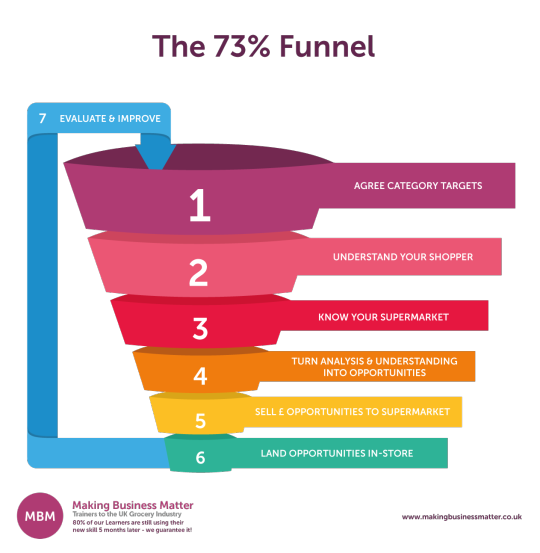
At MBM, our Category training course follows our tried and tested ‘Funnel’ for the Category Management process. This covers all the core topics, as detailed below:
1. Agree on the Category Tactics
Often, we find Category Managers fail to have agreed on a specific target for their category. Thus, they have no idea if it will be achieved. Without targets, you will have no idea where you are going, or indeed if you are already there. In short, the category is like a ship sailing on the ocean with no destination. Effective Category Management is, thus, impossible. This layer of the funnel accounts for 8 points of the 73% failure rate.
We suggest choosing from one of the following:
To encourage…
More people to buy from your category (Penetration).
Existing customers to buy more often your category (Frequency).
Customers to buy more from your category on each visit (Average Spend).
The choice is a simple one, and should only be one of the above. We say only one as, for instance, often an increase in penetration may result in a net decrease in average spend. If you focus on all three at once your tactics will likely fail.
2. Understand Your Shopper
We have found that most Category Managers only focus on one-third of the overall ‘Shopper’ opportunity, the in-store customer. Missing two-thirds of the ‘customer’. Understanding only a small part of who buys the product. This, in part, brings us back to the old Customer vs. Consumer question. You should (hopefully) have noticed in this article that we use the term ‘consumer’ when we discuss the user of a product and a need being met. Likewise, we use the term ‘customer’ when we discuss the in-store purchaser. To reduce confusion, we at MBM like to use the following labels: ‘Shopper’, ‘Preparer’, and ‘Eater’.
We think it is important to consider that each stage of the Category Management process could include a different person. These different people will likely have different needs, motivations and potential barriers. By using these terms we can better understand and target the ‘Whole Shopper’. Obviously, these could all be the same person. However, by breaking them down we maximise the opportunity to meet needs which may otherwise have been overlooked. This layer of the funnel accounts for 13 points of the 73% failure rate.
2.1 Category Management Case Study
Read about a case study that sought to understand the bagged salads shopper. This was published in The Grocer magazine. Find out about how Florette started to put clear blue water between them and their competition.
3. Know Your Supermarket
How aligned is your Category Management to the goals and needs of your Supermarket? We all know that you can’t fit a square peg in a round hole. For instance, do you know their strategies? Internal processes? In-store operations? Knowing your supermarket is essential. If you don’t you’ll be constantly chasing your buyer because they’ll be trying to navigate the guidelines, restrictions and processes, whereas you could have when you presented. Awareness of these things will help you develop category tactics that fit. This layer accounts for 9 points of the 73% failure.
4. Turn Analysis & Understanding into Opportunities
Many Category Managers get lost in the minefield of category data they have. Unfortunately, they often fail to correlate the best sources of data with the correct analytical tools and skills. As such, they rarely find deep insight and category opportunities, becoming a data regurgitator. Someone that just takes the data and presents it in a nicer way. This is because they fail to develop hypotheses before they start. By identifying hypotheses before you begin analysing the data, you will be more focused on category sales opportunities. We like to think of it as a targeted approach. This layer is responsible for 12 points of the 73% failure rate.
5. Sell £ Opportunities to Supermarket
Only 27% of opportunities ever make it in-store. Selling the opportunity can be the toughest part. A lot of hard work has gone into understanding and identifying the opportunity. Yet so many suppliers fall at this hurdle because they have not considered alternative ways to engage the Buyer. They simply create a deck. How would you feel sitting in front of a deck and being talked at for an hour 5 times a day? Our founder, Darren A. Smith, was once asked to meet a supplier to hear feedback from consumers. The frozen carrot consumer. A small part of the portfolio at best, yet important to the Supplier. This funnel layer accounts for 13 points of the 73% failure rate.
On our e Learning Category Course, we show you alternatives so that you can build-up your toolkit.
Do You Want to Become a Category Ninja?
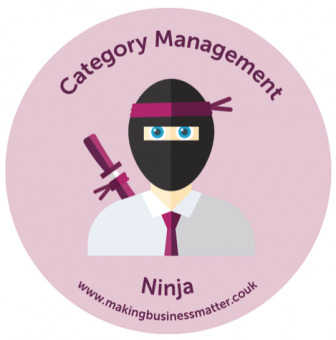
Our online course has been designed using over 150 years of Retail Category Management experience, by ex-Nams, ex-Category Managers and ex-Buyers.
6. Land Opportunities In-Store
Making sure that your recommendations to your Buyer don’t just look good on paper, but that they also will land well in-store. Often described as ‘the last 100 yards’ of Category Management, store operations are often forgotten or ignored. As a Category Manager at a supplier, you have a responsibility to close that gap too. We can no longer abdicate responsibility for understanding stores to the Buyer.
This layer of the 7-layer funnel accounts for 12 points of the 73% failure rate. Failing at this last hurdle will mean that all your hard work has ‘gone to pot’. The range/the promotion/the NPD will probably only last less than 12 weeks in-store. A little like the MD of a pizza company that once shared his story about his joy and dismay at getting into McDonald’s. A long story short — They had got into McDonald’s. All the hard work had paid off. One of McD’s requirements is that you work in a restaurant for a day. The MD obliged. The first order came in and was via the window (Drive through). Delighted. They cooked it, took it to the window. It would not fit through the window!
7. Evaluate & Improve
We quickly move from one project to the next, without knowing how to make the next project better. It is essential to understand how to measure your performance as a Category Manager and to continuously improve. Your target is to beat the industry average for landing rate and time!
We believe that this seventh layer accounts for 6 points of the 73% failure rate. A low amount. Nonetheless, how will you ever be better, earn more, impress your boss, unless you know what went well and what didn’t go so well? The best salespeople in the world are told to evaluate, evaluate, evaluate. Hone your pitch. Write down your script. Seek feedback. Category Managers should be the same.
Other Examples of Category Management
Category Management in Purchasing
The concept of Category Management has evolved. No more is it the sole reserve of the retail industry. In fact, it is now an essential strategy to adopt for all purchasing and procurement decisions. Applying the fundamentals of the Retail Category Management process to purchasing can lead to reduced costs of goods, reduced supply chain risk and increase the overall value of the supply base.
Peter Hunt (ADR International) describes it as:
“..the term category management can mean different things to different people, so a working definition is needed. A ‘category’ is the logical grouping of similar expenditure items, such as spend on advertising agency services or IT hardware. [It] ..is the sourcing process used to manage these categories to satisfy business needs while maximising the value delivered from the supply base.”
A category procurement strategy groups products based on the ability of the market to supply. As previously noted, it helps to grow sales and profits by maximising synergies. It has also removed unproductive competition between brands. In doing so, it doesn’t restrict itself with organisational boundaries. At its core is a process which uses cross-functional teamwork. People working together to deliver a product.
So what has it done to alter the procurement process? And what are the advantages?
Some of the benefits are:
It has extended engagement and teamwork with stakeholders.
There is a greater process of governance across organisational boundaries.
The depth of category-specific knowledge which can be shared.
An emphasis on the use of planning and analytical tools.
Whilst this approach spans many industries and is beyond the remit of this guide, it is interesting to also consider how developments have led to changes in FMCG. I.e. how it has altered the approach to purchasing and procurement in our industry.
Benefits of Category Management in Procurement
A key benefit of Category Management is the role it now plays in procurement and the wider supply chain within retail. Procurement, simply put, is about sourcing or getting the goods you need to fulfil your business model.
Historically, grocery sales were driven by what we call a ‘production push’. In essence, the supply chain decided what they wanted to make/grow. Now by using data and analytics to drive strategy, what we’ve learned from managing categories has changed this. Decisions made by Category Managers are based on two key things, efficiency and meeting a consumer need, because of this, sales are now driven by consumer demand. We like to call this ‘consumer pull’. Through data, consumers are telling us what they want to buy. Consequently, it is the role of the supply chain to respond to this and offer it.

Category Planning encourages more communication and end-to-end thinking. For this reason, procurement and purchasing now work closely with supermarket facing teams. This allows them to give the customer what they actually want to buy.
What is a Category in Marketing?
Marketing has categories whereby they group shoppers (consumers) into similar categories. Similar to supermarkets grouping products to merchandise, marketers group consumers in categories. This is to make it more manageable. An example of a Category Management ‘marketing category’ could be penetration. Wanting to sell the product to new consumers that have not tried it before. The tactic might be to reduce the price in order to reduce the risk for a new consumer. Or another marketing category might be trip spend — wanting to get current shoppers to buy more when they buy the product. A tactic would be ‘Buy two, and get the third free’.
Summary
Category Management is a structured, analytical and data-driven approach to the decisions taken in store. To maximise category and retailer profitability execution of the Category Planning process is key. Consequently, it relies on effective management implementation of activities, supported by analytical tools which enable accurate decisions to be made.
Further Reading and Resources
Category Management Training
Take a look at the image below to see how our classroom-based Category Training or our online e Learning Category Course can help you to achieve more. Please contact us for further information.

Our trainers are from your industry and can provide training on any one of our products, from Myers Briggs and Negotiation Skills to Executive Coaching, Time Management, and Presentation Skills, using our unique Sticky Learning methods.
Free Download — Category Management Guide
Are You Concerned That You Are Using the Same Promotional Mechanics That You Did Last Year and You Still Have No Idea if They Make Money?
Discover how to design more effective promotional plans that are profitable with a known ROI.
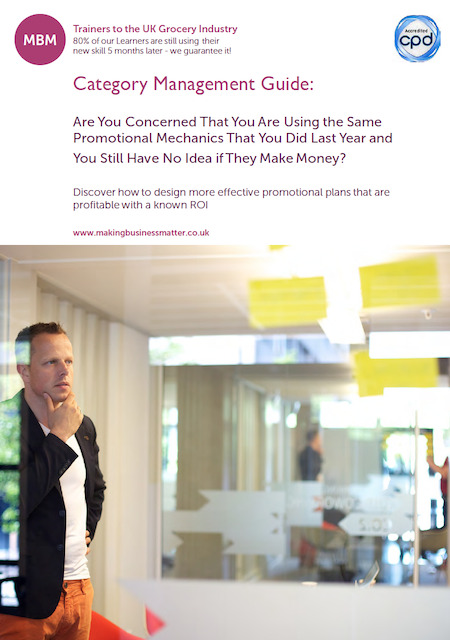
This guide looks at how more effective promotional planning can be applied in today’s UK Supermarkets. It will provide you with new approaches, fresh thinking and thought provocation to ensure you keep ahead of your competitors. With 7 pragmatic tips, you can take away and use today.
Watch Our Videos
Watch our Category Management Tips YouTube channel and playlist with more tips
Read our Glossaries
Read our Category Management glossary for a complete definition and A-Z of key terms. Additionally, feel free to take a look at all of our soft skills glossaries.
Read our Blog
Take a look at our award-winning blog and for more useful information and tips for Category Planning. You can also read our book reviews, including Mark Taylor’s ‘Who Killed Category Management’.
Contact Us
Feel free to get in touch to find out how one of our Category Training can help you.
About Andy Palmer

Andy started at the coal face with eight years in food retailing. Prior to joining MBM he then spent five years in the supply base in positions of category analysis, Category Management and account management. He works as part of the team enabling suppliers to UK supermarkets to secure more profitable wins through people development. He specialises in Category Training and is a qualified HBDI practitioner.
0 notes
Text
wearing facial hair and socks in their pants
Cost and services covered vary greatly by region, company and plan. Plans may reimburse you for the cost of health care services after you receive them or may require you to go to cheap jerseys participating providers, who bill them directly. Your plan may cover all of your costs or may require you to contribute a co payment with each service.
Cheap Jerseys free shipping BLOCK THE BORDERS: Reports indicate Joe Thornton (San Jose Sharks), Rick Nash (New York Rangers), Mark Streit (New York Islanders) and Logan Couture (San Jose) are headed for the Swiss league while D Christian Erhoff (Buffalo Sabres) has returned to Germany. "It sucks leaving here but I've still got to play," Thornton told the Mercury News. Washington Capitals captain Alexander Ovechkin is negotiating to play in the KHL.. Cheap Jerseys free shipping
wholesale jerseys My name is Fisher Argyle and I'm the Scottish Liason to the Ministry of Magic's Department of Magical Games and Sports. We're glad you all could attend. So without further ado, let's get the show on the road. The vary of amenities that they provide cannot match any apartment. Elaborating on the popular locations for villa www.cheapjerseysofchina.com property in Chennai and the prime locations embody ECR, OMR, Sriperumbudur/Oragadam and GST Road. Suburban and peripheral locations are most well liked for villa developments and there's restricted development of such projects at intervals the town attributable to the non availability of land parcels within the town and their high prices.. wholesale jerseys
wholesale nfl jerseys I went sheepishly to a gender bending party, dressed in a Risky Business style men's shirt and no pants. When I arrived I saw that other women were wearing facial hair and socks in their pants. Clearly we were not on the same page. The jury were told they were still friends, but the trial threw up moments of profound awkwardness, not least when Fitch Holland described Mel Cairns during a police interview played to the court as "a girl who liked bright, shiny things". And Fitch Holland claimed that a drunken comment ("Oh, he's guilty, Cairnsy's guilty") to Chris Harris, another former New Zealand international who gave evidence, was a reference to his personal life, not match fixing. "I would have said the only thing Chris Cairns is guilty of is not keeping his trousers zipped up.". wholesale nfl jerseys
Cheap Jerseys from china People think of and they think of the bedside nurse. Nursing today is so much more than just working at the bedside. We impact people in many ways and in cheap nfl jerseys numerous environments. In 5 Element acupuncture, treatment is divided into 3 stages, 1. Clearing shock, 2. Nourishing the system and releasing physical blockage, and 3. Cheap Jerseys from china
wholesale nfl jerseys from china No. 5 Mount St. Mary's split with No. "We get to Notre Dame, it's like 3,000 people out there. And it was so dangerous, they're right in your face. I couldn't believe they didn't have it roped off or some security. Although most visitors to Las Vegas don't make it outside the Strip, finding the best cafe in Sin City requires a trek out to the 'burbs. Out in Green Valley, in the suburb's oldest shopping center, Mothership meticulously roasts some of the tastiest beans in the country. The company is an offshoot of the city's first independent coffee shop, Sunrise Coffee House, but with a greater emphasis on delivering the best cup possible via careful sourcing, roasting and brewing of beans like their single origin Peruvian espresso. wholesale nfl jerseys from china
nfl jerseys Mahindra Mahindra concentrate solely on football, believing the company's products and the game's image go hand in hand. "Football is a tough man's game it goes well with our products, jeeps and tractors," says former captain, coach and now manager of, Harish Rao. The Chowgules put in their money into two levels of the game: Vasco competes in the NFL while the other Chowgule funded www.cheapjerseys-football.com outfit Salcete Football Club plays in the Goa league. nfl jerseys
nfl jerseys Two years ago at the end of a mismatched All Ireland final, Tom O'Sullivan and Mike McCarthy stood at the edge of the square at the Canal End in Croke Park and made retirement plans. Mike Mac was as good as his word and exited the stage. Tom was seduced into another season, and then another.. nfl jerseys
Cheap Jerseys free shipping A few girls were in the forefront of battles taking place in the wholesale jerseys from china Southern coastal countries. There were incidents where they were bombed and machine gunned by diving planes, and so were issued with tin hats. After a raid in Canterbury ten out of eleven Land Girls from a bombed house reported for work the next morning at the usual time, the eleventh apologised for being late but explained that she had to be dug out of the debris. Cheap Jerseys free shipping
cheap jerseys A great guy. He a great player, obviously, Tretter said. Offense is running great, running smoothly right now. I cannot wait for you to experience the amazing, collective experience of a concert. Not a festival where people attend simply to be seen or to watch the numerous side show acts of fire jugglers and circle drummers; but a real concert experience. Where everyone has traveled there for the same reason and from that night they will take with them a memory or a story that will be www.cheapjerseyssalesupply.com revisited numerous times in later years cheap jerseys.
0 notes
Text
Farm to home concept is gaining momentum during the COVID 19 crisis
New Post has been published on https://apzweb.com/farm-to-home-concept-is-gaining-momentum-during-the-covid-19-crisis/
Farm to home concept is gaining momentum during the COVID 19 crisis
Lockdown has made foragers of us all. For the first one month, long lines outside supermarkets and empty shelves made grocery runs as exhausting as they were unnerving. Fortunately, over the past few weeks farmers have started finding ways to deliver their produce directly to customers.
Nalla Keerai, co-founded by R Jagannathan, had stopped their deliveries and subscriptions model for a while. However, in response to requests from former customers they decided to relaunch. Explaining how they have revived subscription, Jagannathan says they supply pulses and dairy products in addition to fruits and vegetables to about 200 customers in Chennai. About six varieties of greens are sourced from Nalla Keerai farms located in Pakkam and Alamathi in Thiruvallur district. Jagan and his team also source country vegetables from small and medium farmers in Thiruvallur district, Hosur and in Udhagamandalam region.
B Shivakumar, an entrepreneur who runs a pharma company began farming in 2015. His organic plots — 106-acre Madras Iyer Thottam, 70 acres in Sathyamangalam and 36 acres in Germalam — produce 35 different vegetables, seven types of bananas and 10 varieties of fruit. He supplies Chennai, Bengaluru, Coimbatore and surrounding regions.
“No vegetables stay in our farm overnight after we harvest them as we transport it to customers immediately,” he says. In an attempt to discourage hoarding, Shivakumar says he personally assesses orders received and makes sure that families do not buy more than what is required. “In fact I talk to my customers and provide them tips for buying. Educating my customers on the principles of organic farming is high on my agenda,” he says, adding that he has about 560 customers in Chennai city alone.
Marudhu Pandi, co-founder of Farmvalli Organics, a three-month-old start up, which delivers to Bengaluru and Chennai, says he spends a lot of time educating customers on the value of organic produce, even if it is marginally more expensive sometimes. He says customers also need to relearn how to eat food that is in season when buying local, organic fruits and vegetables. “We observe that customers are not always willing to wait for the harvest, but are in a hurry to get what they want at a lesser cost in a wholesale market. We explain the crop cycle and why we cannot produce more. It is because of the demand for more that farmers too are focusing on using chemicals for higher yields,” he says.
Farmvalli Organics, a three-month-old start up, which delivers to Bengaluru and Chennai offers a unique subscription model: Rent-a-farm. “The idea is to involve families, so they understand where their food is coming from,” explains Marudhu Pandi, co-founder of Farmvalli Organics.
He adds, “Customers rent land on our farm. They can choose to grow their favourite vegetables (upto 15 varieties) and enjoy the harvest with a monthly subscription.” Customers can track the progress on the Farmvalli app, and get any four types of vegetables, sufficient for a family of four, home delivered every week. The subscription costs ₹ 2,300 per month and the start-up currently works with six farmers in Chennai and Hosur. Apart from vegetables, they also have a poultry farm in Guduvancherry, near Chennai, from where they deliver country chicken, Kadaknath chicken and eggs to customers in Chennai.
The lockdown has also inspired entrepreneurs like Raj Ramachandran, promoter of Kriyates, a restaurant, sports and recreation centre, to get involved with farming. He will be setting up an organic vegetable bazaar for a few hours within the campus of large apartment complexes or schools in and around OMR and ECR.
Discussing the fact that organic produce is not always more expensive, Alladi Mahadevan, who runs a 96-acre organic farm in Kalpakkam says, “When onions were sold for ₹160 a kg, organic onions were more affordable. Now with Koyambedu market closed, there is a shortage of supply and all prices have sky rocketed, but our vegetables have not,” he says.
Alladi has started home delivery of vegetables in Chennai, and also acts as an aggregator helping 20 other organic farmers in Dindigul, Namakkal, Villupuram, Coimbatore, Cuddalore, Chidambaram, Puducherry, Erode and Pollachi, to market their produce during the lockdown. These farmers send their vegetables to Kalpakkam, from where it is packed and sent to customers. “This way, the farmer who toils in the soil gets a fair share and customers also get a wider variety of vegetables from across the state,” says Alladi, who focuses on bulk orders from apartment complexes.
Farm to home Individual orders: Nalla Keerai: Individual orders for fruits, vegetables, oils, pulses and rice. 9042011768 www.farmvalli.com: Fruits, vegetables, A2 milk, poultry and eggs. 18004195575 MIT Organic Farms: Hill and country vegetables, fruits. 9849001586. Bulk orders:www.theorganicfarm.in: Hill and country vegetables, fruits, heritage rice and pulses. 9840277566 Kriyates: Organic Bazaar will be set up based on requests from apartment complexes. Fruits, vegetables, grocery and food items based on pre-order. 9840700547
“When it comes to organic, we have to focus on nutritional value and not look for variety. Country vegetables such as brinjal, cluster beans, coccinia, okra and broad beans are the staple. We also get hill vegetables such as cauliflower, potato, carrots and beetroot,” chuckles Mahadevan, adding, “Now, we farmers decide your menu.”
Source link
0 notes